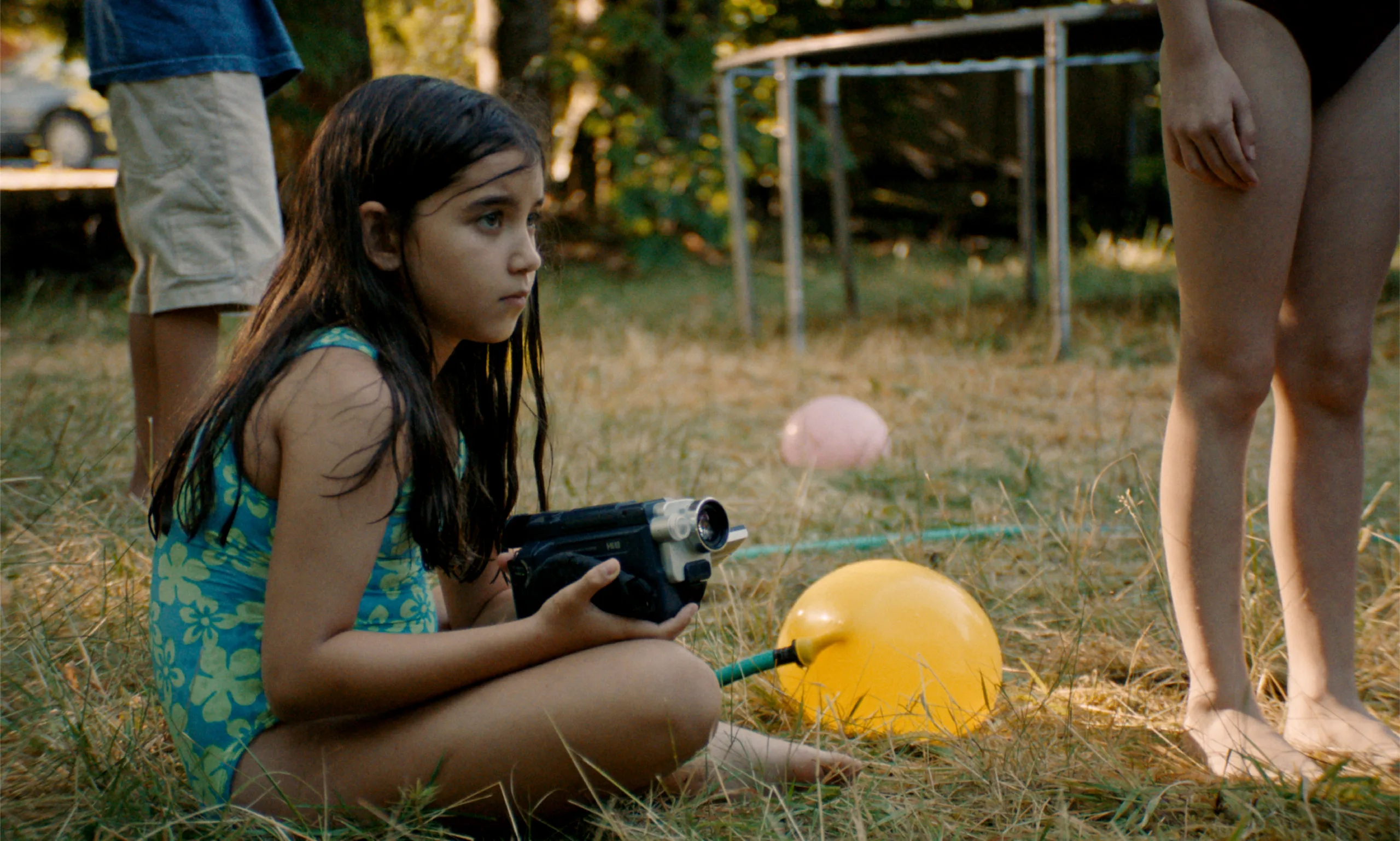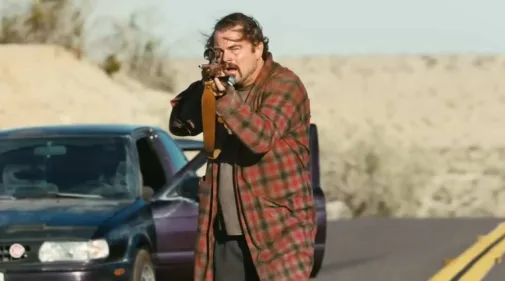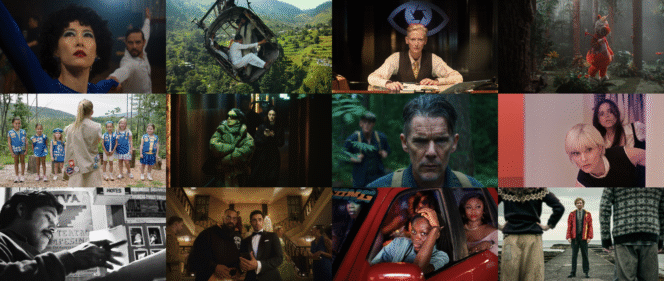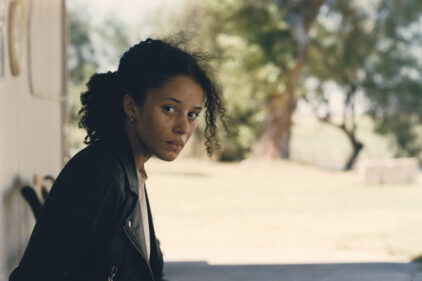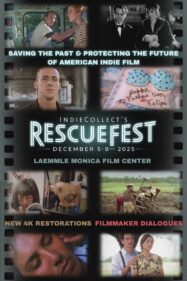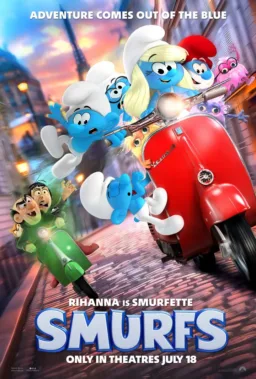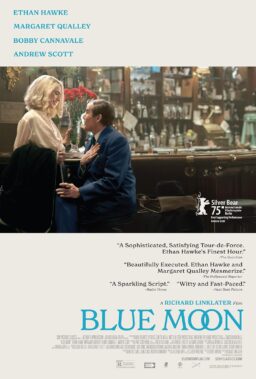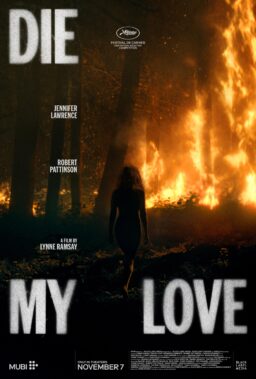The Locarno Film Festival never ceases to surprise me. The eclectic programming makes it so that you’re never seeing two films that are wholly alike. In this dispatch, for instance, are three works that couldn’t be more different: a moving coming-of-age film, a searing critique of AI, and a lighthearted throwback Western. And while I’m recommending all of these pictures to varying degrees, I’m not sure I’d recommend anyone watching them back-to-back-to-back for fear of experiencing too many extreme tonal whiplashes. The lone feature binding them all together, in fact, is their ambition within their respective sandboxes.
There is a pulsating ache at the heart of writer/director Sophy Romvari’s assured feature debut “Blue Heron” that hits with such precision, it could break you open from the inside. See, there is a fine line between anger and regret, which can cause one to masquerade as the other. Romvari’s fractal film keenly actualizes the slide between both poles through an ingenious memory play structure and a startlingly raw vulnerability. The film, which is set to head to the Toronto International Film Festival next, isn’t just a highlight of Locarno’s Cineasti del Presente section. It’s also a film that so deftly wields the best qualities of cinema to shake tightened emotions, one can scarcely escape without exposing their own personal pain.
Romvari begins her film with a confession. “It’s true I spent most of my life being angry at him,” the narrator (Amy Zimmer) explains as she points her camera phone from a cliff down toward a car winding through a woodland road. “The older I get, the more I feel like I never even knew him at all.” Soon, we learn that this vehicle is occupied by a Canadian-Hungarian family, comprising three sons, a daughter, a mother (Iringó Réti), and a father (Ádám Tompa). The eldest son, Jeremy (Erik Beddoes), is usually moody and aloof. The father and mother often fret about Jeremy’s unruliness, which stems from a mental illness that no one can quite name. Although Sasha (Eylul Guven) is our protagonist, we’re not always looking at the world directly through her young perspective. Sometimes we see it from the dad’s camcorder or reflected in windows. The camera will sometimes drift and wander away through elaborate pans, maintaining a point of view that often recalls Max Ophüls, particularly during the opening scene of “The Earrings of Madame de…”
At first, it seems quite clear where Romvari’s film is heading, which could cause a glib viewer to hurriedly equate this intense coming-of-age film with works that blend memory and pain, like “Aftersun” or “All of Us Strangers.” But just as we feel like we’ve learned plenty about Jeremy’s rebelliousness and possible suicidal ideations, Romvari pulls the rug out from under us. The second half of “Blue Heron” becomes less narratively stable, nipping and tugging the past and the present together until they’re nearly indistinguishable.
Romvari’s documentary short, “Still Processing,” which examines the grief caused by the death of the filmmaker’s brothers, serves as a thematic precursor to “Blue Heron.” And yet, this film doesn’t suggest a reworking of formerly explored ground, but the capturing of further revelations mined from a greater passage of time. The documentary-inspired aesthetic language is similarly employed yet subverted, objective yet evocative. By the end, what’s found isn’t an understanding of what happened, but an acceptance of the person who lived it.
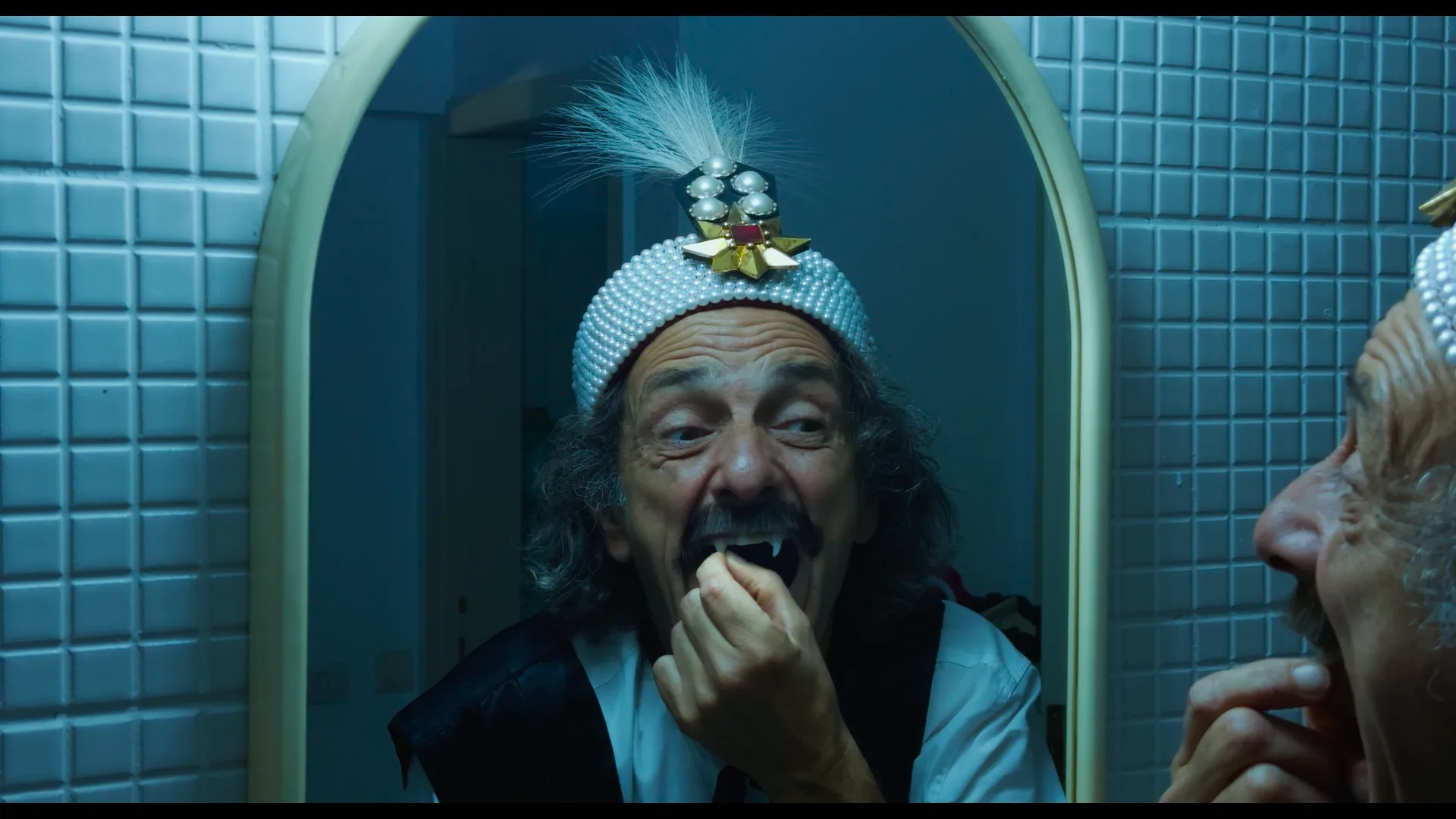
I’m going to try to describe Radu Jude’s “Dracula” in the simplest way possible: It’s fucking nuts. For one, if you’re arriving at his film expecting a faithful adaptation of Bram Stoker’s material, well, I’m not sure why you’d expect that from the director who made “Bad Luck Banging or Looney Porn.” Rather, the film serves as a continuation of the Romanian filmmaker’s Fake News-TikTok critique “Do Not Expect Too Much from the End of the World.” Like that film, the writer/director disavows good taste while interrogating politics, economics, history, and his local culture for a media studies treatise that leaves no one unscathed. Rather than using TikTok as his primary tool for satire, however, here Jude leans on generative AI. The move is a risky gambit, one that could either be lapped up by AI cultists or dismissed by ardent cinephiles.
Jude, however, might not think he’s in any danger. After all, the joke is pretty self-evident: the film follows a director (Adonis Tanța) whose lack of talent causes him to turn to AI to manufacture a version of “Dracula” that’ll win him Hollywood adulation. Though there is an A-plot, which involves a late-night Romanian Dracula show starring an impotent actor (Gabriel Spahiu) and his vivacious Vampira (Oana Maria Zaharia) that goes horribly wrong—there are also B thru Z plots too. These are inspired by the prompts the director asks AI to render. We jeer and we laugh as the computer doesn’t come remotely close to pulling off standard filmmaking techniques, tonal awareness, or even specific genres. When the director asks the DR. AI JUDDEX 0.0 to make a sexy lesbian vampire flick, it admits to not having functions for diversity because it was manufactured in the European market. At another point, he attempts to remake F. W. Murnau’s “Nosferatu” only for the computer to reimagine the classic as commercials for vitamins, tourism, and porn. Late,r when he wants DR. AI JUDDEX 0.0 to make a silent film, only half the film is silent.
None of the Draculas are played by the same person, the shots are sometimes out of focus, and the extras are so under-rendered they often appear as cardboard standees. Sometimes the film is overwhelmingly grotesque, especially whenever a flurry of generative AI stills flash past with the distastefulness of horseradish on cherry pie. The point is clear: Jude hates AI. And so he’s made an entire film to show just how bad it really is.
Many will probably object to Jude’s lampoonish method because it might suggest to pro-AI people that it’s possible to make a three-hour film like Jude’s with the same technology. But even with “Dracula” possessing the hallmarks of Jude’s tonal approach: lots of sex (there’s one section where a farmer makes a crop of dicks), plenty of cursing, and knowingly uncouth humor—his more serious political arguments lack refinement, appearing to be lax and nearly unfinished. And maybe for this film, that’s a feature, not a glitch. Jude tried AI, and he made a worse film for it, which might be among the rare examples of a director taking several steps back to make a film that’ll be studied for decades.
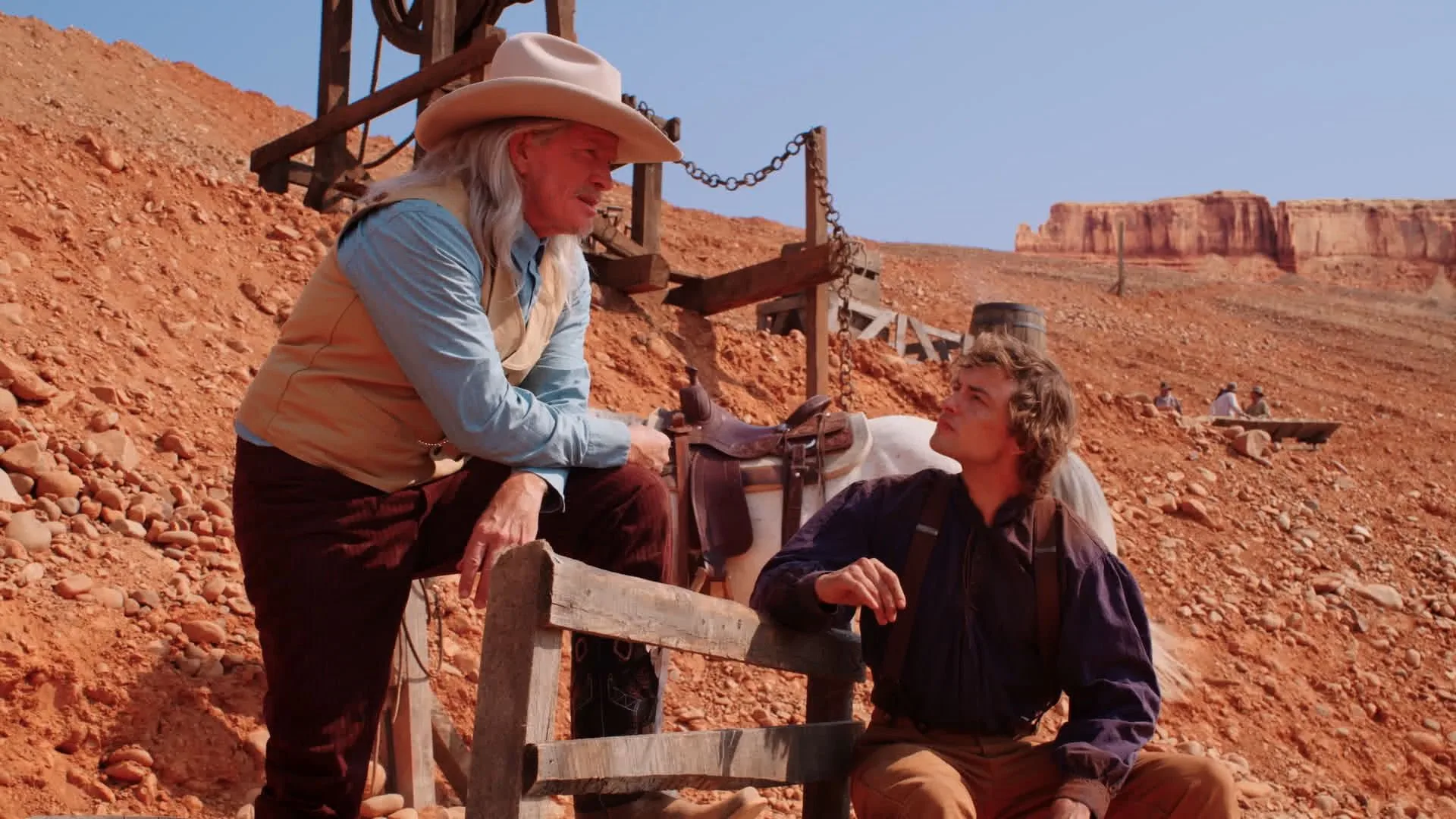
One of the odder films at Locarno might be Duwayne Dunham’s fantastical Western “Legend of the Happy Worker.” It’s a knowingly earnest, kitschy work whose cartoonish approach sticks out from the more experimental films being presented here. The quirky adventure adapted from the same-titled S.E. Feinberg play was produced by David Lynch, whose collaborations with Dunham included editing “Blue Velvet” and “Wild at Heart,” as well as directing several episodes of “Twin Peaks.” While “Legend of the Happy Worker” doesn’t reach those heights, its playful mood and stilted aesthetic aren’t totally alien to “Twin Peaks” or Dunham’s prior feature directorial efforts like “Halloweentown” (if you squint, I promise there’s a through line there).
The meandering mythical work concerns a digging town founded by the family of Goose (Thomas Haden Church), a resolute but even-keeled leader and cowboy who identifies the blissfully naive digger Joe (Josh Whitehouse) as someone who could potentially become a foreman to the area’s many laborers. Though these workers spend their days digging a hole for reasons we can’t fathom, they don’t appear to be aggrieved. They really love ploughing the earth. Their utopian existence is disrupted, however, by the return of the mean Clete (Colm Meaney), who wants to use tractors to dig deeper into the soil. It’s up to the kindhearted, wide-eyed Joe, Clete’s nephew, to stop him.
Dunham’s film is in a kind of grey area; it’s at once not as cute as the material suggests or as nightmarish as it could get. For every scene featuring a turtle race or shovel becoming a kind of Excalibur, there’s also cold-blooded murder. Joe’s wife Joanne (Megan Holder) is seriously underdeveloped, and the fable aspects are too obviously rendered to be wholly transportive. Nevertheless, Church is simply astounding, bringing an unlikely gravitas mixed with some quiet comedic timing for a bewitching quality. Whitehouse, whose performance is purposely grating, nimbly follows the arc of his character, becoming a quippy hero worth following.
Even when “Legend of the Happy Worker” struggles, I found myself being somewhat forgiving. This kind of overly sentimental work told with a lighthearted touch was commonplace in the 1990s, particularly in kids’ sports movies like “Angels in the Outfield” or the Dunham-directed “Little Giants.” So it’s somewhat heartwarming to see a film like this out in the wild somewhere, even if the film itself isn’t as wild as the material promises it’ll be.

